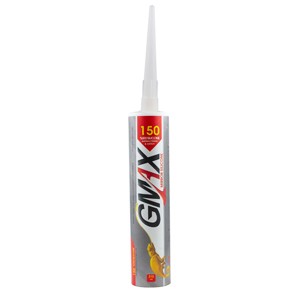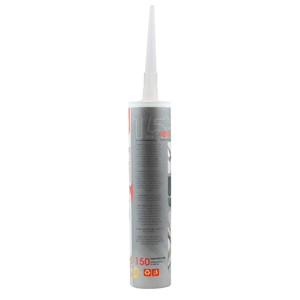

mirror silicone
**GMAX Silicone Adhesive for Mirrors: Secure and Durable Bonding Solution**
GMAX mirror silicone adhesive is specially formulated to safely and effectively attach mirrors to surfaces like walls, tiles, and other substrates. It ensures a strong and durable bond, preventing mirrors from detaching and minimizing the risk of breakage or accidents. Ideal for both residential and commercial applications, GMAX silicone adhesive provides long-lasting support, keeping mirrors securely in place for years to come.
This high-performance GMAX mirror silicone adhesive is also designed to withstand environmental factors such as temperature fluctuations and humidity, making it an ideal choice for bathrooms, kitchens, and other areas with high moisture levels. Its non-corrosive formula prevents damage to mirror coatings, ensuring that the reflective surface remains clear and intact. Easy to apply and quick to cure, GMAX silicone adhesive is the go-to solution for professional mirror installations, offering a perfect balance of strength, flexibility, and reliability.
technical specifications
|
Density |
0.97 g/ml |
|
Temperature Resistance |
Between -50 to 250 c |
|
Vulcanization Speed |
15-20 minutes |
|
Curing Speed |
1.5 mm/day |
|
Losing Volume |
5.5% (DIN 52451) |
|
Shore a Hardness |
20 (ISO 868) |
|
Steady Elasticity |
25% (DIN 52451) |
|
Elongation at Break |
400% |
|
Power of Breaking Potential |
2.3 MPa |
|
Maximum Joint Measures |
30 mm |
|
Heat Insulation Quality |
0.17 w/km (DIN 53612) |
|
Elasticity |
200% (ISO 8339) |
|
NCT WT |
330 gr |
|
colors |
White- black- transparent |
product usage
-
Bathroom Mirrors: Mirror silicone is frequently used to install mirrors in bathrooms, where there's often high humidity and temperature variations. Its moisture-resistant properties help maintain a strong bond in these conditions.
-
Wall Mirrors: Whether in residential or commercial settings, mirror silicone is suitable for attaching wall-mounted mirrors. This is often seen in home decor, fitness centers, dance studios, and dressing rooms.
-
Vanity Mirrors: In bathrooms or bedrooms, vanity mirrors can be affixed to the wall using mirror silicone to create a seamless appearance.
-
Gym Mirrors: Many fitness facilities use large mirrors on walls for both functional and aesthetic purposes. Mirror silicone ensures that these mirrors stay securely attached, even with the vibrations caused by activities in the gym.
-
Decorative Mirrors: Mirrors are used for decorative purposes in various settings, such as restaurants, hotels, and retail spaces. Mirror silicone helps maintain their intended position and appearance.
-
Mirrored Tiles: In interior design, mirrored tiles can be installed to create unique patterns and designs. Mirror silicone is used to adhere these tiles to walls, backsplashes, or other surfaces.
-
DIY Projects: For individuals working on DIY projects involving mirrors, mirror silicone can be used to securely mount mirrors without the need for specialized tools or hardware.
-
Furniture: Some furniture pieces, such as wardrobe doors with mirrored panels, may require mirror silicone to attach the mirrors in a way that complements the overall design.
how to maintain
Keep away from moisture and on a wooden pallet with a maximum of 6 cartons in height.
Store at -10 to +50 degrees Celsius.
How to use
Steps:
-
Surface Preparation:
- Ensure the surface where you'll be attaching the mirror is clean, dry, and free of dust, grease, and any old adhesive residues.
- If needed, use isopropyl alcohol or a suitable cleaner to clean the surface thoroughly. Let it dry completely before proceeding.
-
Mirror Placement:
- Position the mirror on the prepared surface to determine the exact placement. You can use a level to ensure the mirror is straight.
-
Marking:
- Use masking tape to mark the edges of the mirror's desired placement. This will serve as a guide for applying the silicone adhesive.
-
Applying the Mirror Silicone:
- Load the mirror silicone cartridge into a caulking gun.
- Cut the tip of the silicone cartridge at a 45-degree angle to create a small opening.
- Apply a continuous bead of silicone adhesive along the back of the mirror's edges, approximately 2-3 inches from the edges.
- Apply additional silicone in a zigzag pattern across the center of the mirror, leaving enough space between the lines for the adhesive to spread and create a solid bond.
-
Mounting the Mirror:
- Carefully position the mirror onto the marked surface, aligning it with the masking tape.
- Press the mirror firmly against the wall, allowing the adhesive to spread and make contact with the surface.
-
Securing the Mirror:
- Use masking tape to hold the mirror in place while the silicone cures. Apply tape along the edges of the mirror to prevent it from sliding down.
-
Curing Time:
- Follow the manufacturer's instructions for the recommended curing time. Typically, mirror silicone will need several hours to fully cure, but it's a good idea to leave it overnight for optimal results.
-
Removing Excess Silicone:
- Once the silicone has cured, carefully remove the masking tape.
- If there is any excess silicone visible around the edges of the mirror, use a utility knife to carefully trim it away.

